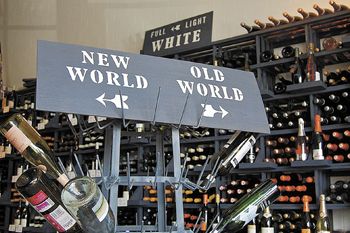Old Versus New World

“I hear a lot of people talk about “Old World” and “New World” wines. I feel like I should know what that means, but I don’t. Can you explain the differences?” - Mark in McMinnville
The differences between Old World and New World wines are not quite as black and white as they used to be.
Twenty years ago, wines that came from regions with a long and “old” history of wine production, like France, Italy and Germany, had more earthy characteristics than fruity ones. Generally, their acids were higher, the alcohol was lower and they tended to drink better with a little age rather than in their youth. These regions and their wines were considered Old World.
Conversely, wine from regions like Australia, New Zealand, the U.S., South America and South Africa, whose wine production is, relatively speaking, newer, tended to have more fruit upfront, the alcohols tended to be higher, the acids lower, and they were often made to be consumed in their youth.
In both cases, there are exceptions, and Oregon has always been one of them, skirting the line between worlds. With that said, over the last decade, styles have become more homogenized. Old World wines are staring to show more similarities to New World wines and vice versa.
In short, when someone says a wine exhibits Old World style, it means it shows notes of earth and has higher acids and lower alcohol. When a wine has been labeled New World, it will be fruitier, full bodied and in your face — like a lot of Americans I know.
Old World or New, they are both delicious. Never discriminate. Enjoy.
- Jennifer Cossey
I look forward to receiving more of your questions. Email me at jcossey@oregonwinepress.com to submit your questions, and I’ll see you next month!








